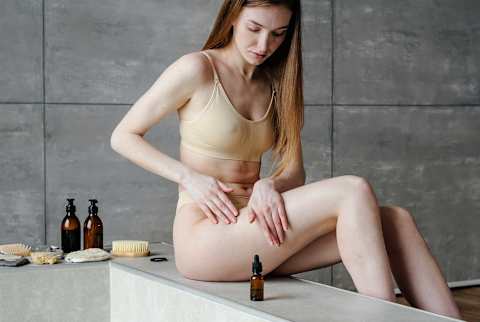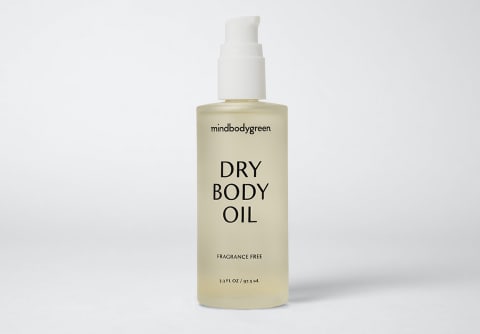Advertisement
Expert-Approved Skin Care Layering Hacks That Keep Skin Hydrated


When the temperatures start to dip and there’s a chill in the air, one of the first things most folks do is toss on an extra layer or two. Perhaps you go to the back of your closet and pull out your favorite sweaters and brush off your jackets, getting your wardrobe ready for the cooler seasons.
Well, just like you layer your clothing—it’s time to start layering your skin care.
During the colder, dryer months, the skin is more prone to dryness. This happens because of transepidermal water loss1, which is when water evaporates from the top layers of the skin into the air around it.
It’s possible to stop this from happening by adding protective, moisture-rich layers on top of the skin. You know: creams, oils, occlusive balms. This helps trap water in the skin throughout the day and night, protecting your moisture barrier and keeping your epidermis from drying out.
So here, how to layer like a skin care pro—courtesy of tips from our favorite experts.
Shower sandwiching
There’s little I find more relaxing than a hot shower in the middle of winter. It’s a moment of comforting, soothing warmth that I have all to myself. My skin, on the other hand? Well, hot showers aren’t the best habit for skin health.
Hot showers can melt away your skin’s natural oils and damage the fatty acids in your skin barrier. Not only can it disrupt your natural oils, but "hot water evaporates faster," board-certified dermatologist Purshiva Patel, M.D. once told us. This means it increases transepidermal water loss. Combined, this one-two punch can lead to increased dryness and irritation.
However, I’ve found a simple solution to protect my skin barrier during my warm showers: Shower sandwiching.
This hack comes to us from celebrity esthetician and dermatological nurse Natalie Aguilar who notes that you should apply body oil before and after the shower—so you're essentially sandwiching your skin between those rich, nourishing fatty acids. "This oil barrier prevents excessive water loss and helps with any irritation," she told us.
Personally, I love mindbodygreen's body oil because it has the perfect lightweight, effortless texture. It's a dry oil, which simply means it has a light, not greasy finish. While some people prefer a rich or thick oil, I want something that doesn't feel too goopy pre- or post-shower.
It's made with enriching botanical oils, like safflower seed oil, squalane, and vitamin E, so it's ideal for keeping skin soft and firm.
Hot tip:
Slugging
If you’ve spent any time on the beauty side of social media, you already know about the very online trend of slugging. The practice involves applying a thick, occlusive ointment on top of your other moisturizing layers before going to bed.
For those with dry skin, this practice can help your epidermis retain moisture throughout the night. This is important because it is more permeable in the evening2 and TEWL is more common.
However, it’s important to remember that slugging needs to be layered over moisture. "Think of a cup you want to cover—if there's no water in it, it's pretty pointless," Alicia Yoon, celebrity esthetician and founder of Peach & Lily once told us about the trend. So before you slather on that thick goop, be sure to flood the skin with hydration.
Wash your face with a gentle cleanser, apply a moisture-rich essence to add a thin layer of water, layer on humectant serum (such as hyaluronic acid), and top it off with a moisturizer. Once your nighttime skincare routine has had a chance to settle, then apply your balm of voice.
Editor’s tip:
Apply a hand cream & cuticle oil
If your nails chip, break, and become more brittle when it gets colder, you’re not alone. Just like the dry, cool air dehydrates the skin, it’ll dehydrate your nails too. One way to help is to layer up on your hand hydration—and not just on mani days. Everyday.
To keep hands and nails in top form, apply a hand cream and cuticle oil daily. Start with a hydrating, moisture-rich hand cream. I like mindbodygreen’s postbiotic hand cream. The high-quality, innovative blend nurtures your skin microbiome, deeply hydrates, provides antioxidant protection, and improves the appearance of the skin instantly and over time.
Feel free to use this hand cream liberally throughout the day, as the hands are often the first areas of the body to experience skin issues: They’re often the first to get dry come winter, as well as the first to experience signs of aging like dark spots, crepiness, and wrinkles.
But for an extra layer of support—especially for those brittle nails—top it off with cuticle oil once daily. "Cuticle oils are formulated with emollients that act as a barrier to lock in moisture around the cuticle area," celebrity nail tech Tammy Taylor once told us.
Expert’s tip:
The takeaway
As the seasons change, so does your complexion. Just like you toss on an extra layer when the temperatures go down, be sure to layer up on your skin care products too. By adding protective layers of moisture, you can help keep the skin deeply hydrated.












